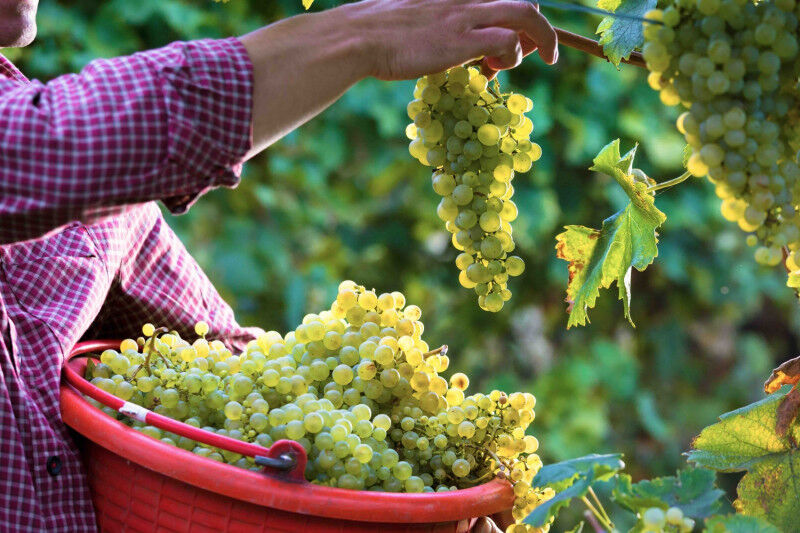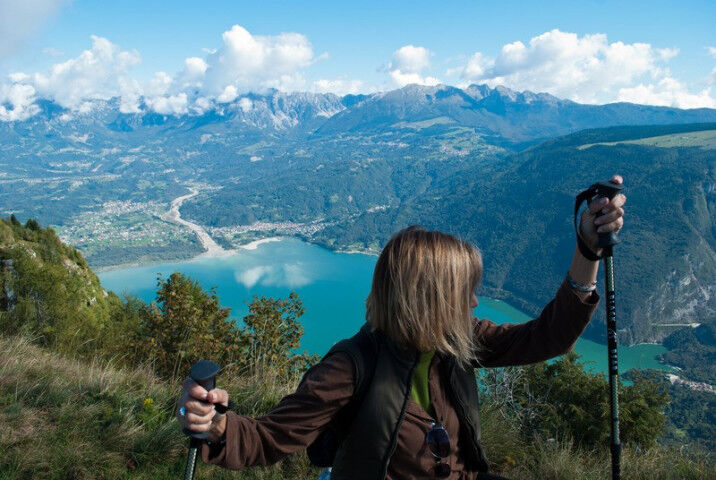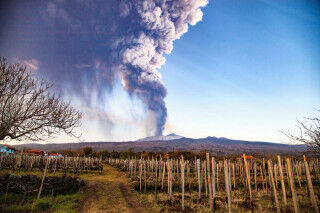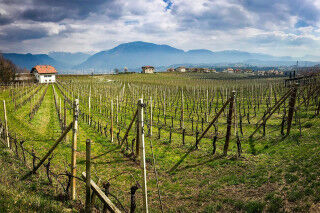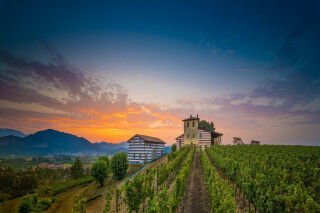Garda Doc: Let's discover the history and characteristics of this precious wine.
Why is it called Lake Garda?
Lake Garda, from the Germanic warda, meaning "place of lookout or observation,” is renowned for its perennially temperate microclimate.
What is Lake Garda famous for?
This environment is favorable to the growth of a beautiful Mediterranean vegetation, and fosters the presence of other flora and fauna that we find entirely lacking in other nearby regions withinthe general pre-Alpine area. Garda has consistently maintained a place in the public perception, oscillating between fascination and general interest. The area is particularly captivating as an ancient agricultural zone, which we know from unearthed historic settlements dotting the countryside. Population density of the Garda countryside increased greatly during the Venetian rule of the land, adding greater numbers to a landscape already dotted with Romanesque structures and churches.
The agricultural facet of the region also became more productive thanks to the presence of noble farming villas, which combined the principles of productivity with purely humanistic ideals. The Lake Garda economy has also been tied to two different characteristics: an economy based on tourism and an economy based on agricultural productivity. Thanks to the land and climate, the agricultural element has proven particularly beneficial and proficient. We can interpret the Lake Garda area therefore as primarily an agricultural landscape, established between the 16th and 17th centuries.
Primary crops of the time included the cultivation of cereal grains and orchards. Olive trees and grape vines also found root during this time, and today, it’s very fair to note that the area’s cultivation of its vines reveals with great accuracy the body and soul ofthese lands!
What is DOC Garda?
The multi-regional Garda DOC includes the entire Lombardy-Veneto morainic amphitheater, starting from east of Lake Garda all the way tothe west of Lake Garda itself. The area dedicated to vineyard cultivation is quite large, marked by dense markings of elongated undulations sloping gently towards the (Po) plain. The area includes the denominations of origin (DOC) of three provinces: Brescia, Mantua, and Verona, the largest of the three. The Verona province includes areas as diverse asthe Valtènesi, San Martino della Battaglia, Lugana, Colli Morenici Mantovani, Custoza, Bardolino, Soave, Valpolicella, Valdadige and Monti Lessini-Durello.
Where is DOC Garda located?
The Lake Garda valley is beautifully reflected into the lake’s waters. The area is marked by the cultivation of over 30,000 hectares of vines. What grapes are grown here? A whopping 6 main varieties, including Garganega and Corvina vines in the Verona area, Turbiana (Trebbiano di Soave) and Groppello vines in the Brescia area, and Merlot andChardonnay grapes in the Alto Mantovano area. Consequently, the Garda DOC label covers a range of white, red and sparkling wines, created with an assortment of autochthonous and international vines.
The main advantage of this large wine denomination is thanks to its diverse typology. The result ofthese diverse blends is a delicious, ready-to-drink wine hinting at fragrance and sapidity, brimming with bubbles that pay homage to freshness. The possibilities of late harvests and passito helps create the ideal balance between body, maturity, and sweetness.
What are the grape varieties of Lake Garda?
As mentioned above, the Garganega and Turbiana grapes (for white wines), and the Corvina and Groppello grapes (for red wines), represent the local, house grape varieties that mainly characterize the Garda production area.
Garganega
As the most influential and authoritative white grape variety of the Verona province, Garganega is considered the "ancient prince" of the Veronese vines. The grape has been lovingly harvested and cultivated throughout the centuries along the mountainous areas near the Valle d'Alpone, Tramigna, Illasi and Mezzane. The resulting wine features aromas characterized by fresh floral notes, followed by nuances of ripe fruit. After an adequate aging period, the white wine can also reveal an extraordinary minerality accompanied by a slender, agile, and harmonic structure.
Trebbiano di Soave
Trebbiano di Soave is also a vine of remarkable vigor, presenting more pyramidal and compact grape bunches. The grapes are also characterized by a good, constant yield. Overall pleasantness, fragrance, lightness, and acidity are accompanied by a floral scent. With these positive elements in mind, naturally this indicates a well-deserved success for both grape varietals.
Groppello
Within the red grape world, the area is possibly most strongly identified by its production of the Groppello grape. Cultivated almost exclusively in the Valtènesi area, the grape was nicknamed Pignolo in 1299 by Pier de' Crescenzi. The Groppello grapes, cultivated on Lake Garda shores facing Brescia, result in light, brilliant ruby-colored wine, with slightly fruity, spicy aromas. The wine typically is characterized by good body, medium alcoholic levels, and good acidity. The finish is properly tannic, andis both fine and dry.
Corvina
We arrive conclusively to the Corvina grape, arguably the most important red grape of the Verona province. The grape is delineated by its thick skin with its purplish color, and is very consistent and very pruinose in appearance. The Corvina grape contains a lush pulp, with a simple, sweet flavor. The wine made from Corvina grapes is obtained from the traditional vinification of fresh grapes,, and offers cherry-dominated aromas. When aged, the wine subsequently presents intriguing nuances that are both spicy and Balsamic. Its texture is typically balanced and sustained, maintaining good acidity and sweet tannins. This texture helps maintain the wine’s rhythm and balance.
What to see beyond Lake Garda?
There is so much to explore in the area of Lake Garda and the Alps that surround it! Walking along the eastern side of the lake you will find beautiful villages and moving to the North East you can enter the mountains and reach the Belluno Alps. The milk coming from the cows of the high mountain pastures, is used to make one of the most valuable Italian cheeses: Piave DOP Cheese.
Piave is a hard cheese, produced in the province of Belluno only with high quality raw materials.
Made only with fresh milk from Belluno, salt and rennet, it is a cheese rich in calcium and naturally gluten free. It pairs perfectly with the wines from Garda.
You might be interested in:
